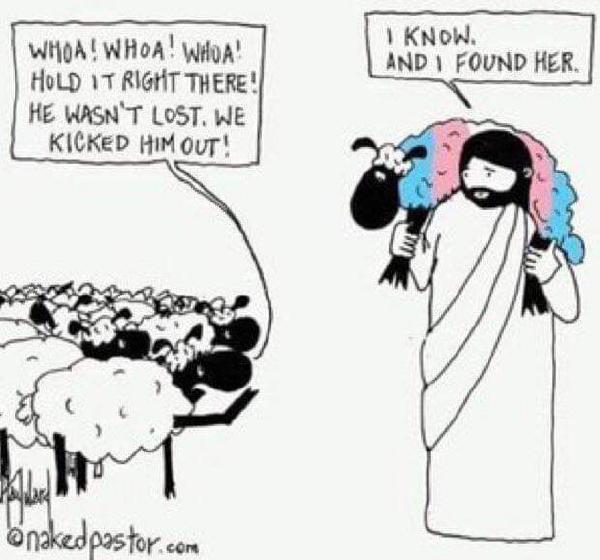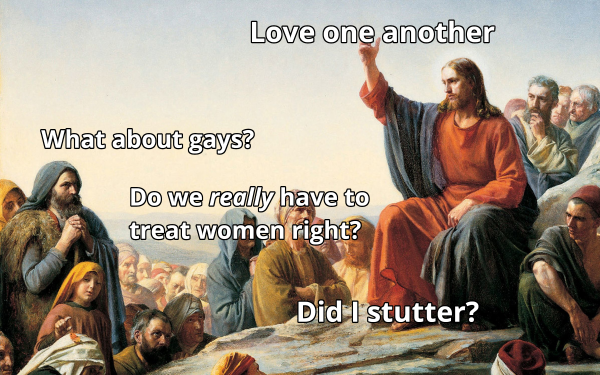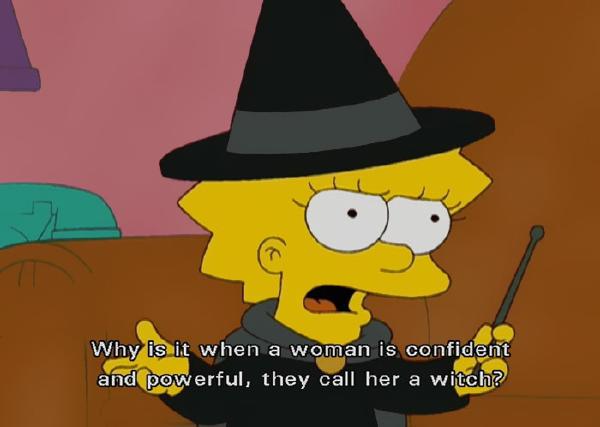Gender and Sexuality

Gender and Sexuality: Homosexuality (Part 1)
OK, so this is a two-part miniseries focused on homosexuality (/bi/pan/whatever… basically not-hetero) in the series of six posts on gender and sexuality. There’s tons and tons to say on this topic (as evidenced by the many books and articles written on the subject, the countless podcasts and videos and debates…), but I think in these two posts I’m going to get a good base set out. So, spoiler alert: These two posts are going to be all about how being gay is OK. I had a bit of a tough time planning out which order I was going to put some of what I view as the most important building blocks in. On one hand, there are some passages in the Bible that seem pretty explicitly anti-gay that often cause quite a bit of trouble for folks; in my opinion, it’s often best to deal with parts you think might be the toughest first. On the other hand, before we even get there it might help to have some motivation for some theological reasons for why we should revisit past church teaching, discussion on the approach we’re going to take, and maybe even some elaboration on my own past journey on this issue. Ultimately I decided to put those issues first, and next week’s post will drill down on the “clobber passages” that some folks like to point to claim homosexuality is wrong, as well as some theological arguments folks use against homosexuality that don’t rely on the clobber passages. Why not just trust non-affirming teaching? …WHY ARE YOU QUESTIONING ME??? The biggest point on this for me is: anti-gay doctrine has been destroying people’s lives and pushing them away from, rather than drawing them toward, God! I’ll quote my very first post, referencing how I approach theology: In short: Study, pray, and think (a lot!), but then always, always, check your theoglogical conclusions against two things: If it is of God, it should be life-giving, and it should be loving. It it’s not those things, you’ve developed bad theology. Now, I want to be very careful here. Matthew Vines uses what some might see as similar language to motivate revisiting non-affirming doctrine, claiming one reason we should do so is non-affirming doctrine produces the “bad fruit” of depression & suicide for LGBT folks (Vines 2015). What he’s referencing is part of Jesus’ “Sermon on the Mount,” specifically Matthew 7:15-20: Watch out for false prophets. They come to you in sheep’s clothing, but inwardly they are ferocious wolves. By their fruit you will recognize them. Do people pick grapes from thornbushes, or figs from thistles? Likewise, every good tree bears good fruit, but a bad tree bears bad fruit. A good tree cannot bear bad fruit, and a bad tree cannot bear good fruit. Every tree that does not bear good fruit is cut down and thrown into the fire. Thus, by their fruit you will recognize them. That seems like it backs up his point! However, this is one of those times that only ever paying attention to English translations, or in particular trying to hang something on specific words or phrasing in English translations, can get you into some trouble. The Greek word translated as “bad” there is πονηροὺς (ponērous), which more specifically means evil or wicked (Strong 1890, #4190), and similarly the adjective “good” in “good fruit” is καλοὺς (kalous), which more specifically means morally good or virtuous (Strong 1890, #2570).1 So many argue, and I agree, that a better interpretation of that passage is not just whether a teaching causes any generic bad outcome, but that Jesus was referring to (and warning us about) folks whose teaching doesn’t lead to repentance and turning toward God (“good fruit”).2 (See, for example, Burk 2019 for such a critique, though I will say there’s a great deal in the article I don’t agree with as well.) There are things to like about Vines’ book, as well as things I disagree with, and this is just one of those things I think he missed the mark on… slightly. Why do I say slightly? Because I still think there’s some truth in that idea, as you might guess from my own self-quote above. What causes this depression? Ask anyone who’s queer and it’s clear: Lack of acceptance, shame, fear about rejections, etc, are all big drivers. This is where non-affirming teaching leads. Now I beat this drum over and over again, but it’s because it’s important: Love is “the fulfillment of the law” and “does no harm to a neighbor” (Romans 13:8-10). Non-affirming teaching has led generations of Christians to be hateful toward LGBT folks, and I’m not just talking about teaching that homosexuality is a sin as being hateful (we’ll get to that later). Y’all know what I’m talking about; all too often, non-affirming Christians go above and beyond how they normally react about things they think are sinful—do they engender the same sense of shame in the gossipers in their church as they work so hard to do in LGBT folks? So, to my mind, non-affirming teaching does bring bad fruit: It does not lead those that follow it to repentance from selfishness and hate, but rather leads to the wicked fruit of using God’s word in service of homophobia.3 Not only that, but rather than bringing LGBT folks to Christ, it often drives them out of the church and away from Christ! That is some bad fruit indeed. My story So, as some reading this may know already, I’m bisexual. But—I didn’t really approach this stuff from that angle when I first started reading about this stuff because I was so repressed I didn’t think of myself as bisexual at all (and in fact I’ve been married to a woman for over 10 years). I came up as a conservative evangelical, with very staunch non-affirming doctrine being taught to me essentially from birth (I was in church even from the very first Sunday I was out of the hospital after I was born). What made me do a double-take was how hateful people were toward gay folks, how often I heard that fact being used as a reason why those gay folks didn’t want anything to do with Christianity (“Why would I want to be part of a religion that produces such hateful people?”), and just how hard it was on gay folks. Now, this whole time, there were moments where feelings or thoughts of same-sex attraction would come up for me, but I would basically try to violently push them from my mind, and just act like that wasn’t me. “I can’t be into men… I’m a Christian!” So I just basically tried to act like that didn’t happen at all, and I didn’t think of myself as bisexual for quite a long time. Although there are some ways that having this long period of repression… you know, kinda sucks… but there is one way that may be a little bit of a benefit in retrospect: When I really started researching this in earnest, I was able to do it from a little bit of a distance; I was trying to figure out what Scripture meant for ~other people~, not me, I couldn’t be queer… But anyway, what I mean is, I think it helped me to really run the traps and not get ahead of myself on coming to conclusions. Now, I didn’t start researching this in earnest, not at first from when I started having doubts about the non-affirming doctrine I’d been taught growing up. I focused, as some evangelicals are now, on making sure I was treating queer folks well, and convincing other people (especially Christians) to not be hateful toward queer folks. I tried to talk people at least into the viewpoint that even if you think “homosexual activity” (ya know, like getting iced coffee and playing Carly Rae Jepsen’s E•MO•TION album… oh, no, actually I meant the “other” stuff) is sinful, you’re not leading folks to Christ by shaming them and being hateful towards them. You’re not loving them or following Christ by treating them in that way. But eventually, I started hearing about Christians who were questioning non-affirming doctrine, or even actively professing affirming doctrine. I didn’t even know that was an option! I was nervous about it at first. Paul tells us in 2 Timothy 4:3, For the time will come when people will not put up with sound doctrine. Instead, to suit their own desires, they will gather around them a great number of teachers to say what their itching ears want to hear. But, I thought about it. I prayed about it. And I determined the best course would be to read stuff from these folks, but also to read rebuttals of those works, and to stay in prayer and thoughtful seeking of Truth in that time. Ultimately, as I signaled at the beginning of the post, I was “fully convinced in [my] own mind” (Romans 14:1-5) that “homosexual activity” is not sinful. Once I felt confident in that conclusion, it was like a key unlocked something in my mind. “OH… I’M GAY!” OK, well, I’m not gay, like I said I’m bi, but don’t judge me for my heat of the moment thoughts! How to approach Scripture on this issue “OK, but how did you become convinced ‘it’s OK to be gay,’ Potato?!?” I hear you screaming at the screen. “What about those passages that seem… pretty anti-gay??” Well, like I said, I’m going to do a deep dive on all that next week, plus looking sort of beyond the six “clobber passages” to some broader points that non-affirming folks make, and some broader points that us affirming folks make. But, before then, I want to talk about what the approach to Scripture that I found helpful was. When I was taught homosexuality was a sin, I was told, “Just look at the words right there on the page! It couldn’t be clearer!” However, that’s… not really quite true. There’s a number of assumptions we sort of unknowingly bring to the text when we read it, and without working at it, they can be hard to identify… you know, like just mindlessly “looking at the words on the page.” So, I like to focus on two questions: What would this text have meant to its original audience? What should it mean to us today? Some might object to that second question. “What do you mean you’d think in some cases it should mean something different to us today than it did to the original audience?!?” What I mean more specifically is this: If a relevant factual or societal context has changed between now and then, the text just simply might not speak directly to our current circumstances, because the thing the original audience would have heard a warning against might not exist anymore, or at the least might not be the same sort of thing we’re talking about when we came to the Scriptures looking for guidance. We have to look at the meaning of the Scripture, the deeper meaning. Is this not what Jesus taught? Consider Mark 2:23-27: One Sabbath Jesus was going through the grainfields, and as his disciples walked along, they began to pick some heads of grain. The Pharisees said to him, “Look, why are they doing what is unlawful on the Sabbath?” He answered, “Have you never read what David did when he and his companions were hungry and in need? In the days of Abiathar the high priest, he entered the house of God and ate the consecrated bread, which is lawful only for priests to eat. And he also gave some to his companions.” Then he said to them, “The Sabbath was made for man, not man for the Sabbath.” There were some who Jesus said had misinterpreted God’s Word, because they looked at the words on the page, and they applied it to new situations as those words looked without understanding their deeper meaning. The Sabbath was God’s rest for man, it was not intended to be used in that way. Is this not also what Paul taught? Consider 2 Corinthians 3:4-6: Such confidence we have through Christ before God. Not that we are competent in ourselves to claim anything for ourselves, but our competence comes from God. He has made us competent as ministers of a new covenant—not of the letter but of the Spirit; for the letter kills, but the Spirit gives life. God’s Word is replete with calls to understand the underlying meaning of the Scriptures for our life, not to apply rules or commands legalistically. Now that’s not the end of the story! We also have to examine what the Bible says about sexuality and do our best to ascertain its meaning, and that’s precisely where I’m going in the next post. References Burk, Denny. 2019. “Beware of a ‘Test the Fruit’ Hermeneutic.” July 15, 2019. https://www.dennyburk.com/beware-of-a-test-the-fruit-hermeneutic/. Strong, James. 1890. “Strong’s Exhaustive Concordance of the Bible.” 1890. https://biblehub.com/strongs.htm. Vines, Matthew. 2015. God and the Gay Christian: The Biblical Case in Support of Same-Sex Relationships. Convergent Books. I want to take a second here and note that, like Matthew Vines, I neither have a seminary degree nor am I a linguist. I am just someone who tries to be mindful of the fact that typically when we’re studying the Bible we’re looking at a translated document, so I remain on the lookout for when something might be lost in translation and try to read up on it.↩︎ I am not here claiming that we should ignore other types of bad outcomes, I’m just referring to what Jesus was specifically talking about in this exact passage.↩︎ It is worth noting here that one of the good results on the last several years of scholarship on whether the church should be affirming or non-affirming is that some (not all, but I’ll take any!) non-affirming folks have really taken to heart this problem. They have stuck to their guns on whether homosexuality is a sin, but have tried to address homophobia, hateful treatment, shaming, & etc, and tried to work toward more loving ministry to LGBT people despite not changing their stance. This is a mixed bag in my opinion, but at least a marginal improvement on the status quo.↩︎

Gender and Sexuality: Gender Identity
In this third installment in the series on gender and sexuality, I’ll be talking about gender identity. There are an awful lot of Christian folks who view being transgender as sinful; in fact some churches like the Catholic Church (Versaldi 2019) and other Christian organizations (Focus on the Family Issue Analysts 2018) have put out official statements saying as much. Some of the more lazy non-affirming Christians (non-affirming is a label for Christians who are anti-LGBT, while Christians who accept LGBT folks are called affirming) may just pull out a “clobber passage” they think does the trick and call it a day, though largely this stance is based in the broader complementarian theological framework, which I discussed at length in the last post (don’t worry if you missed that one; I’ll have a refresher later in this post). In my view, not only is this wrong, it is quite against Christ’s teachings and an awful tragedy that has cost lives, both in the sense of people dying, such as Leelah Alcorn who died by suicide after being forced to undergo “Christian” conversion therapy and her parents’ using religously charged language against her (Mohney 2014), and in the sense that it is pushing people away from the church and a life in Christ. First, I’ll demolish the lame attempt at a clobber passage, then I’ll do a brief overview of the broader non-affirming theological outlook, followed by my own view, which is that God has created a wonderful, diverse creation, and that we should love, celebrate, welcome, and learn from everyone. A clobber passage 🙄️ You may see non-affirming folks point to Deuteronomy 22:5: A woman must not wear men’s clothing, nor a man wear women’s clothing, for the Lord your God detests anyone who does this. Some interpret this to mean that anyone born male can’t wear women’s clothes, and vice versa, so that people doing this for various reasons (some of which may not have anything to do with gender identity) are sinning. Okay, so… there’s several problems with this; honestly, it’s almost tough to figure out where to start. I guess first I’ll go with the fact that there really isn’t a consensus on what that command even means anyway; some think it was part of a general scheme of separation in Jewish law, others that it had to do with differentiating from nearby religious practices involving cross-dressing, and others that it had to do with preventing deceptive intermingling for the purpose of heterosexual adultery (Tilsen 2014). Many common interpretations do not support a reading that gives a blanket prohibition on cross-dressing (and in fact, cross dressing is common in Purim celebrations) (Tilsen 2014). In fact, given some linguistic choices in this verse (in the original Hebrew), a blanket prohibition on cross dressing may be a quite tortured reading (Vedeler 2008). Moreover, even if Deuteronomy 22:5 should be read as a blanket prohibition on cross-dressing, it is of course not at all clear that this should have anything to do with trans folks. Trans women are women, so a prohibition on cross-dressing does not make a trans woman a sinner for wearing a dress (and an analogous argument applies for trans men and non-binary folks). It also, ya know… doesn’t speak at all to the broader context of trans folks’ lives… But finally, and most importantly from a Christian perspective, this command does not apply to Christians! If a conservative Christian were to tell me Deuteronomy 22:5 prohibited people from wearing clothing conforming to their gender identity, my first question would be, “Do you ‘Make tassels on the four corners of the cloak you wear?’” (Deuteronomy 22:12). “Do you make sure you ‘do not cut the hair at the sides of your head or clip off the edges of your beard?’” (Leviticus 19:27). Of course they don’t follow those rules! My next statement would be a (loving) rebuke: “Why do you scorn Christ’s fulfillment of the Law, and our freedom in Christ?” (See for example Romans 10:4 and Galatians 5:1-6). The broader non-affirming argument Of course, this isn’t the only argument non-affirming Christians use to avoid respecting folks’ gender identity. You may recall “complementarian” theology from my post on patriarchy… yeah, it’s rearing it’s ugly head again not only to subjugate women, but now also to deny the identity of anyone who isn’t cisgender. Okay, it goes like this: According to Genesis 1:27, “God created mankind in his own image… male and female he created them,” and God’s image is only truly reflected when men and women live their lives according to the gender roles God intended for them, such as men leading and women submitting, and in this case, people conforming to the gender they were assigned at birth. In other words, Genesis proves gender is binary, so you can’t be non-binary, and not only that, but Scripture says you can’t be trans otherwise either. Some sources (such as Assemblies of God 2017) go even further and claim Christ affirms this idea by quoting Genesis in His discussion of divorce. For example, in Mark 10:2-12, we see Some [asked Jesus], “Is it lawful for a man to divorce his wife?” “What did Moses command you?” he replied. They said, “Moses permitted a man to write a certificate of divorce and send her away.” “It was because your hearts were hard that Moses wrote you this law,” Jesus replied. “But at the beginning of creation God ‘made them male and female.’ ‘For this reason a man will leave his father and mother and be united to his wife, and the two will become one flesh.’ So they are no longer two, but one flesh. Therefore what God has joined together, let no one separate.” When they were in the house again, the disciples asked Jesus about this. He answered, “Anyone who divorces his wife and marries another woman commits adultery against her. And if she divorces her husband and marries another man, she commits adultery.” So for the complementarian, this passage has Jesus affirming a divine order in creation, where humans are born either male or female, must identify in that way, and marry a person of the opposite sex, and anything outside of that is sin and corruption of God’s creation from the Fall (see Assemblies of God 2017). (Don’t get hung up on the divorce aspect at this point; I’ll be discussing that in the sixth entry in this series anyway). So did God make us (cis) male and female (only)? OK, so first, even just from a genetic or physiological perspective only, we know there is a wide variety of departures from a simple XX/XY men/women gender binary. About 1% of humans do not fit those two categories; either their genitalia do not match their chromosomes, or they have extra X or Y chromosomes, they have ambiguous genitalia, etc. (Ainsworth 2018). So the strict complementarian’s only refuge is that these variations are the result of the Fall. But is that really the best way to think about the Genesis creation account(s)? I’ll go back to something I said in the first post in this series, starting with a bit longer quote from Genesis 1: In the beginning God created the heavens and the earth… And God said, “Let there be light,” and there was light. God saw the light was good, and he separated the light from the darkness. God called the light “day,” and the darkness he called “night”… And God said, “Let the water under the sky be gathered to one place, and let dry ground appear.” And it was so. God called the dry ground “land,” and the gathered waters he called “seas”… Then God said, “Let us make mankind in our image”… So God created mankind in his own image, in the image of God he created them; male and female he created them. God blessed them and said to them, “Be fruitful and increase in number”… (Genesis 1:1-28) It says that God created land and sea (Genesis 1:9-10), but don’t we also see swamps and marshland? It says God created day and night (Genesis 1:4-5), but isn’t there also dusk and sunset and sunrise? There is a wide variety of beauty in God’s creation that isn’t captured in the contrasts listed in the creation account. Listing these opposing parts of creation doesn’t deny that God created all the things in between! So the most obvious conclusion is: the same is true for gender. God made cis men and cis women. God made people who are intersex. God made trans men and trans women, He made non-binary people. God created everyone, even down to their “innermost being,” and we are all “wonderfully made” (Psalm 139:13-14). Who are we to look down on the majesty of God’s creation?!? So… Christians should love & accept people no matter their gender identity?? Well… of course! I’ve mentioned before how Christ calls us to love others (Matthew 22:36-39), and even that love fulfills all of God’s commands (Romans 13:8-10). Does that mean we even have to love those people (inserting in whatever sort of people you have a personal problem with)? Yes! Over and over and over again, all through the New Testament, we are hit over the head with the idea that love and acceptance extends to all. In Mark 5:25-34, Jesus healed a woman “subject to bleeding,” such that she would have been considered unclean and an outcast; did He feel icky about it or get upset or speak rudely to her? Of course not. He said, “Daughter, your faith has healed you. Go in peace…” In Acts 8:27-36, [Phillip] met an Ethiopian eunuch… and told him the good news about Jesus… As they traveled along the road, they came to some water and the eunuch said, “Look, here is water. What can stand in the way of my being baptized?” Christ reaches out to the outcasts, the powerful, men, women; God’s love is for everyone. As Paul writes in Galatians 3:28, “There is neither Jew nor Gentile, neither slave nor free, nor is there male and female, for you are all one in Christ Jesus.” So, tragically, some Christians have taken a misreading of Genesis so far that they’ve gone against the basic Christian principles of love and unity, and they need to cut it out. References Ainsworth, Claire. 2018. “Sex Redefined: The Idea of 2 Sexes Is Overly Simplistic.” Scientific American. October 22, 2018. https://www.scientificamerican.com/article/sex-redefined-the-idea-of-2-sexes-is-overly-simplistic1/?fbclid=IwAR1zBKEC1_4OhbNe5xacEdgOi-1YXaVTeS02J_fw2N6rGmzVEHP686irM8E. Assemblies of God. 2017. “Transgenderism, Transsexuality, and Gender Identity.” August 7, 2017. http://religiousinstitute.org/denom_statements/transgenderism-transsexuality-gender-identity/. Focus on the Family Issue Analysts. 2018. “Transgenderism – Our Position.” February 1, 2018. https://www.focusonthefamily.com/get-help/transgenderism-our-position/. Mohney, Gillian. 2014. “Leelah Alcorn: Transgender Teen’s Reported Suicide Note Makes Dramatic Appeal.” December 31, 2014. https://abcnews.go.com/US/leelah-alcorn-transgender-teens-reported-suicide-note-makes/story?id=27912326. Tilsen, Jon-Jay. 2014. “Cross Dressing and Deuteronomy 22:5.” July 8, 2014. http://www.beki.org/dvartorah/crossdressing/. Vedeler, Harold Torger. 2008. “Reconstructing Meaning in Deuteronomy 22:5: Gender, Society, and Transvestitism in Israel and the Ancient Near East.” Journal of Biblical Literature 127 (3): 459–76. Versaldi, Giuseppe Cardinal. 2019. “Male and Female He Created Them. For a Path of Dialogue on the Issue of Gender in Education.” Catholic Church. June 10, 2019. https://zenit.org/2019/06/10/new-vatican-document-provides-schools-with-guidance-on-gender-issues/.

Gender and Sexuality: An Intro
Gender and sexuality is the most requested topic for this blog. So, this week I’m kicking off a series of (at least) six posts on it. Today, I’m going to do some introduction on the topic, talking about some general framework issues. Next week I’ll get into issues of patriarchy, followed the week after by a post on transgender issues, followed by two posts on same-sex relationships, and ending(?) with a post on relationships and sexual ethics more broadly. So what’s my starting point when thinking about issues of gender and sexuality? Y’all are gonna get tired of this, but… love. You are made in God’s image (Genesis 1:27), and God loves you (Romans 8:38-39, 1 John 3:1), no matter what (Romans 8:38-39). We’re called to love each other (Romans 13:8-10, 1 John 4:8). Is patriarchal oppression loving? No! Is shaming, othering, and oppressing LGBT folks loving? No! Of course these things aren’t loving. So if that’s what your theology leads to, you’ve lost a step along the way.1 So what’s the disconnect? What led to many Christians believing things that supported these bad outcomes? My best read on this is that many Christians fail to realize that what they’ve been taught about the Bible is itself an interpretation. When they read the Word, they see what they think is the “plain meaning” staring them in the face, but the truth is they’re seeing what they’ve been taught to see. Take, for example, Genesis 1, which is often used to teach that gender is binary and transness is wrong: In the beginning God created the heavens and the earth… And God said, “Let there be light,” and there was light. God saw the light was good, and he separated the light from the darkness. God called the light “day,” and the darkness he called “night”… And God said, “Let the water under the sky be gathered to one place, and let dry ground appear.” And it was so. God called the dry ground “land,” and the gathered waters he called “seas”… Then God said, “Let us make mankind in our image”… So God created mankind in his own image, in the image of God he created them; male and female he created them. God blessed them and said to them, “Be fruitful and increase in number”… “It says it right there—God made 2 genders, not 64! ‘Male and female he created them’—checkmate liberal!” Well, not so fast… It says that God created land and sea (Genesis 1:9-10), but don’t we also see swamps and marshland? It says God created day and night (Genesis 1:4-5), but isn’t there also dusk and sunset and sunrise? There is a wide variety of beauty in God’s creation that isn’t captured in the contrasts listed in the creation account. Why then does the conservative Christian assume the same can’t be true of gender? (I’ll be returning to this passage and this idea more in-depth in a later post). So in this series, I’ll go through several aspects of gender and sexuality. I’ll deconstruct positions I was taught, positions that nowadays are sometimes painted as “the” Christian position or “the” biblical position on those issues,2 and I’ll explain how I think we can better understand these issues; how we can approach gender and sexuality in a way that honors God’s Word and His will… How to think about these issues that I believe helps us best follow The Way. I do want to acknowledge here that lately some conservative Christians have tried to go out of their way to maintain the same theological outlook (homosexuality is sinful, women should be submissive, etc) while recognizing some of the problematic behavior Christians engage in and advocating for a more loving outlook and behavior. I’ll get into this, and why I think it’s wrong-headed in subsequent posts.↩︎ As we’ll see, some of these theological stances weren’t even accepted by the early Church and sometimes are relatively new inventions, but of course some Christians will have you believe they’re the only legitimate way to interpret Scripture 🙄↩︎


